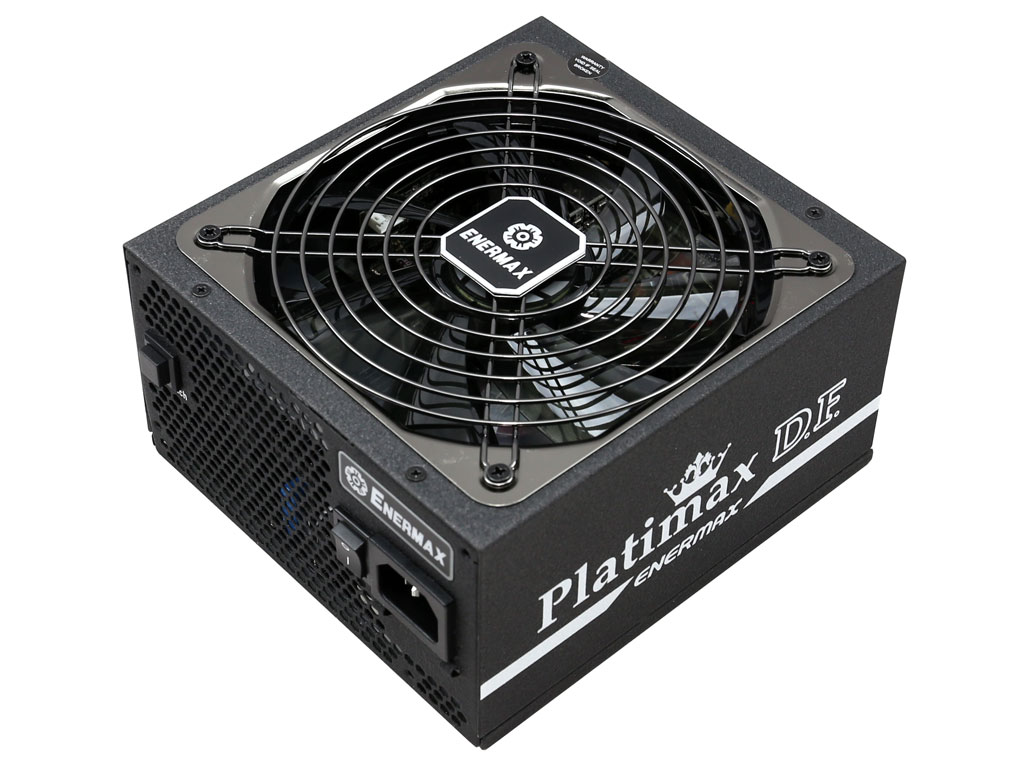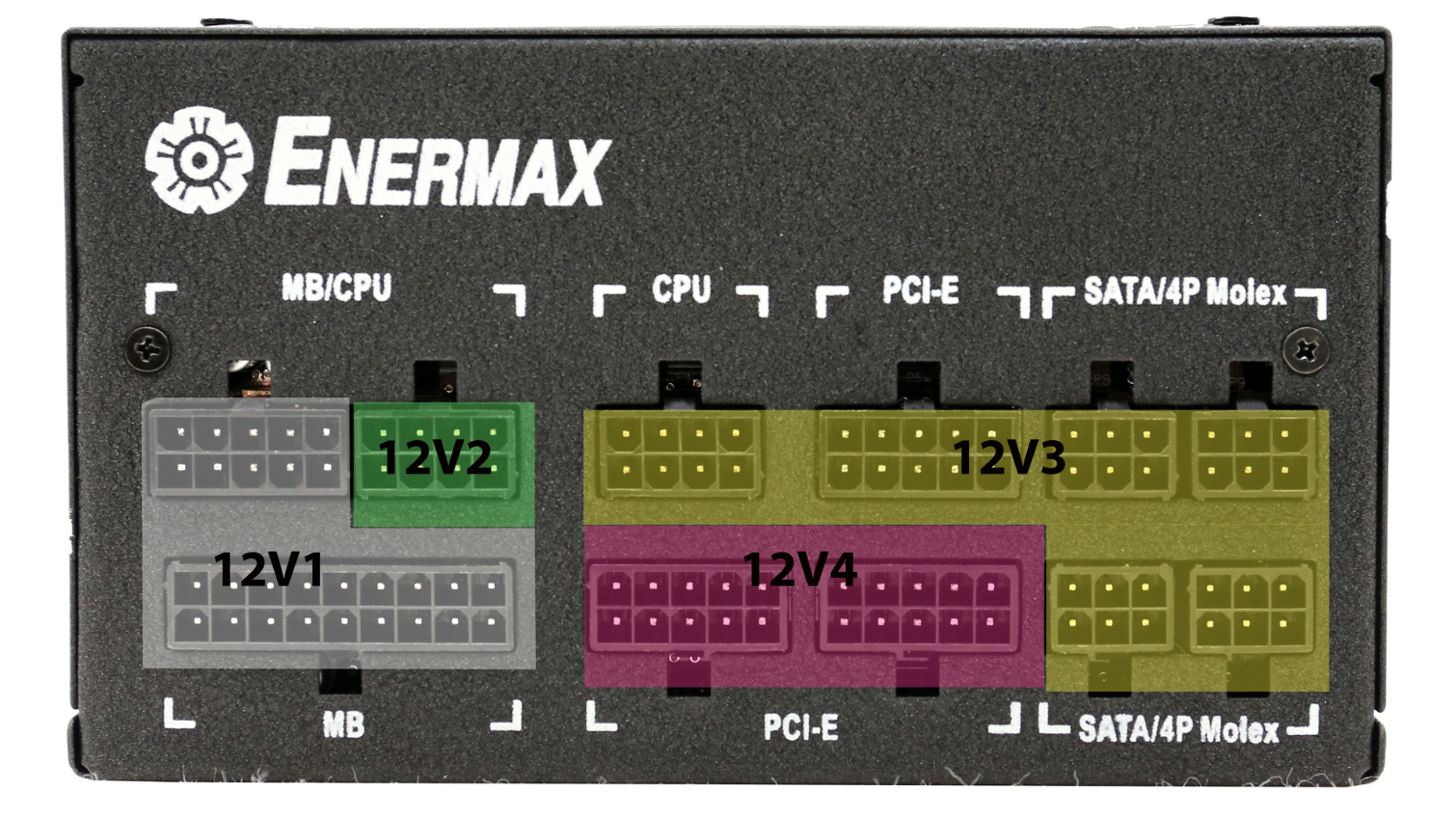Early Verdict
The Enermax Platimax. D.F 1200W is a fairly good PSU, which however isn't priced competitively, most likely because of the extra cost of the individually sleeved cables that it is equipped with. The platform that it uses is modern and capable, but it doesn't meet the performance levels of the competing offers. What makes this unit stand out from the crowd is its super compact footprint and the fan's DFR function.
Pros
- +
Full power at 47°C
- +
Complete protection set
- +
Efficient
- +
Transient response
- +
Hold-up time
- +
Load regulation
- +
Accurate Power Ok signal
- +
Inrush current
- +
Vampire power
- +
Silent at light/mid loads
- +
Fully modular
- +
Twister Bearing fan
- +
Indy-sleeved cables
- +
DFR function
- +
Compact dimensions
Cons
- -
Expensive
- -
6x PCIe connectors
- -
EMI with AVG detector
- -
Ripple suppression at 3.3V
- -
Fan profile needs tuning
- -
Power distribution
- -
5VSB OCP is set too high
- -
Sudden drop at +12V within the 40W-60W load range
Why you can trust Tom's Hardware
Features & Specifications
Enermax recently extended its Platimax D.F line with four more members featuring capacities between 750 and 1200 watts. They're all fully modular, 80 PLUS Platinum-certified, and armed with patented Dust-Free Rotation technology to help prevent grime build-up inside the PSU.
Thanks to DFR, the fan spins in reverse at full speed for a few seconds during start-up, blowing out any dirt that was previously sucked in. The down-side, of course, is that dust is pushed out into the rest of your system if the power supply is installed with its fan facing upward. And if it's installed facing down, dust is exhausted into your room or a filter in your case.
Further, PSUs with semi-passive fan modes shouldn't be installed with their fans facing down. When they are, hot air is trapped inside, defeating the purpose of implementing a semi-passive mode. And if the semi-passive mode is switched on or off based on applied load, it's easy to accidentally trap more hot air inside than intended.
Given all of that, while DFR is definitely a unique feature, it's not as practical as it sounds. In our opinion, the best way to avoid dust build-up is taking your PC outside and cleaning it from time to time.
Another interesting feature of the EPF1200EWT we're reviewing today is its compact dimensions. The PSU is only 16cm deep. That's usually more common in 750W and 850W units, not 1.2kW ones. Channel Well Technology, the OEM responsible for building this PSU, seems to be focusing on platforms with high power density. The companies that use its platforms should be able to match SilverStone soon in comparisons of capacity and internal volume.
Frankly, we aren't huge fans of extra-small PSUs. In most cases, they have a negative effect on noise. Performance can be influenced as well, since there's not enough space for the components needed to guarantee great ripple suppression and tight load regulation.
Specifications
The EPF1200EWT uses a twister bearing fan, which Enermax claims has a crazy-long 160,000-hour lifetime. Only the best fluid/hydraulic dynamic bearing fans are able to match this, with most of them landing below 100,000 hours. However, a lifetime rating without any mention of operating conditions means little to us. At 25-35°C, some fans might last a very long time. But those temperatures are highly unrealistic for PSUs. Manufacturers should cite their fan ratings at temperatures in excess of 40°C. According to our knowledge, only double ball-bearing fans are able to endure high operating temperatures. Other types of high-end bearings (FDB and HDB) fail much sooner than expected. This is why we only recommend DBB fans for mining PSUs that will see heavy use.
Get Tom's Hardware's best news and in-depth reviews, straight to your inbox.
Enermax includes a complete suite of protection features with its EPF1200EWT, and even follows the ATX specification's recommendation for temperature rating. Full power is available continuously at up to 50°C ambient.
Finally, the unit is covered by a five-year warranty, which we believe is sufficient for any PSU.
Power Specifications
| Rail | 3.3V | 5V | 12V1 | 12V2 | 12V3 | 12V4 | 5VSB | -12V | |
|---|---|---|---|---|---|---|---|---|---|
| Max. Power | Amps | 25 | 25 | 25 | 25 | 40 | 40 | 3 | 0.3 |
| Watts | 130 | 1200 | 15 | 3.6 | |||||
| Total Max. Power (W) | 1200 |
Four +12V rails with unequal OCP levels create an interesting configuration. Two of them deliver up to 25A, while the rest can go up to 40A.
The minor rails are strong enough, providing up to 130W of combined power, while the 5VSB rail has 15W capacity.
Cables & Connectors
| Modular Cables | ||||
|---|---|---|---|---|
| Description | Cable Count | Connector Count (Total) | Gauge | In Cable Capacitors |
| ATX connector 20+4 pin (600mm) | 1 | 1 | 16-20AWG | No |
| 4+4 pin EPS12V (700mm) | 1 | 1 | 16AWG | No |
| Eight-pin EPS12V (700mm) | 1 | 1 | 16AWG | No |
| 6+2 pin PCIe (2x600mm) | 3 | 6 | 16-20AWG | No |
| SATA (500mm+150mm+150mm+150mm) | 3 | 12 | 18AWG | No |
| Four-pin Molex (500mm+140mm+140mm+140mm) | 1 | 4 | 18AWG | No |
| AC Power Cord (1400mm) - C13 coupler | 1 | 1 | 18AWG | No |
There are two EPS connectors, as there should be in a 1200W PSU. However, there aren't enough PCIe connectors. Normally, we'd expect a 1200W power supply to include no fewer than eight. Don't be surprised if miners pass on the EPF1200EWT for its six PCIe connectors. You may even want more four-pin Molex connectors, though SATA connectors are plentiful.
The modular cables are long, and the distance between SATA and peripheral connectors is satisfactory. Finally, the AC power cord has a C13 coupler, which is enough to handle this unit's capacity. We would prefer to see 16AWG wires on the power cord though, rather than 18AWG.
Power Distribution
This unit has four +12V rails, two of which have a higher OCP triggering point than the rest. Unfortunately, that 12V3 rail mixes EPS and PCIe connectors, possibly leading to problems if you overclock your CPU/graphics card aggressively.
Normally, the EPS connectors should be fed by a dedicated rail. The same goes for the PCIe connectors. In this case, we would use the 12V2 rail to power the one PCIe socket fed by 12V3, and we'd use that third +12V rail for both EPS sockets. The peripheral sockets could be fed by 12V1, along with the main ATX connector. In that way, we'd avoid mixing the PCIe and EPS connectors.
MORE: Best Power Supplies
MORE: How We Test Power Supplies
MORE: All Power Supply Content

Aris Mpitziopoulos is a contributing editor at Tom's Hardware, covering PSUs.
-
Soaptrail The DFR would not be that bad at adding dust to the case if it does it each time you start your PC. If DFR kicks in each time you resume from sleep i do not expect to see dust all over the case but if DFR is only activated once or twice a year then yes you will be adding dust to the case assuming it actually detaches from the PSU.Reply -
love4earthwk I'm afraid Teardown video is about thermaltake grand rgb.Reply
Enermax platimax df 1200w video is uploaded in Aris's youtube channel
https://www.youtube.com/watch?v=UYHaJDsd9QI -
Aris_Mp Yes there is a problem with the video. We are working on it! I am sorry for the confusion!Reply -
bettsar I prefer to read the teardown analysis. I usually find that to be the most interesting part of the power supply reviews. Thanks for the high quality work that you do in putting these together.Reply

